Microsoft Outlook has some useful methods for viewing calendars. These days, we’re likely to have multiple ones based on personal, work, and family events. In this tutorial, I’ll show how to merge calendars in Outlook and overlay calendars.
How to Overlay Outlook Calendars
Let’s start with a common scenario where you want to view multiple events from different calendars, perhaps to find an “open time.” In these situations, you don’t want to permanently combine your main calendar with your favorite sports team calendar, etc. Instead, you want to layer one on top of another. This layered method is the easiest way to see all your events without having to do imports and exports.
- Open Microsoft Outlook.
- Click the Calendar in the Navigation pane.
- Click the > to expand your Folder pane.

- Check two or more calendars you’d like to overlay.
- Right-click one of the checked calendars.
- Select Overlay from the menu.
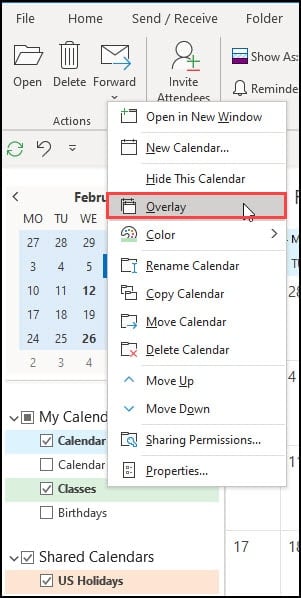
- Repeat this step if you have more calendars to overlay.
The result will be a layered calendar showing all your combined events for the desired time frame. Each calendar event will be colored to show its origin. The colors correspond to the ones you set for each calendar. You’ll probably want to hover over calendar events to get details such as End times and Reminder notices.
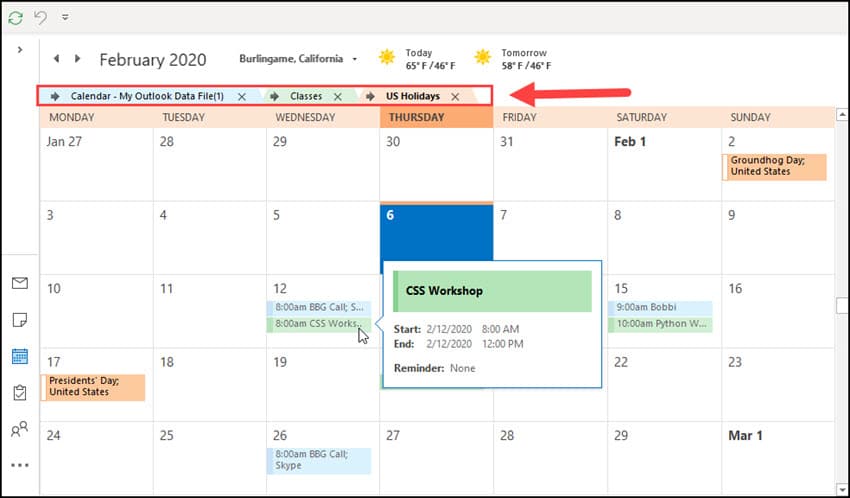
While this is a convenient feature, Outlook won’t inform you of overlapping events. The events show one above the other. You’ll need to hover over each item to check the details.

TextExpander: Worth It? Find Out.
Is TextExpander the right tool to boost your productivity? Get an independent assessment, weigh the pros and cons, and make an informed decision. Find out why I’m a fan.
Read the ReviewMerging Outlook Calendars
Sometimes, I want to combine two Outlook calendars. One reason is some syncing programs fail to sync multiple calendars to my phone. Another reason is some calendars are “read-only,” and I can’t edit the information.
Microsoft Outlook doesn’t provide a menu option that seamlessly “merges” or “combines” calendars. The workaround is to export the secondary calendar and import it into your main calendar. Unlike overlaying, merging calendars is more involved and quirky.
⚠ This process works well for calendars you create, but you should verify if you have any internet calendars or published calendars. Removing these calendar types may impact other users who have subscribed or have links to them.
Internet and Published Calendars
You can verify if you have any of these calendar types by going to File | Data Management. These calendars will show under their respective tabs, as shown below.
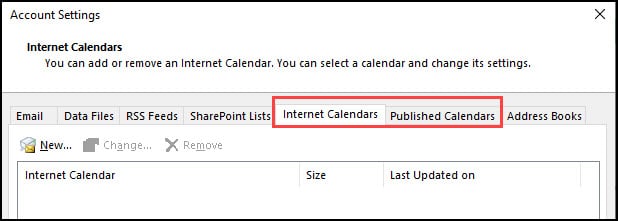
Part 1: Export an Outlook Calendar
In this scenario, I’m using Outlook for Office 365 and will merge a “Classes” calendar with my “main” calendar.
✪ If you want to test out this process first, you can make copies of the calendars you wish to merge. I would rename them to indicate these are test versions.
- From the File menu, select Open & Export.
- From the Open pane, select Import/Export.
- In the Import and Export Wizard, select Export to a file.
- Click Next >.
- In the Export to a File dialog, select Outlook Data File (.pst).
- Click Next >.
- In the Export Outlook Data File dialog, select your calendar folder location. In my example, this will be a subfolder called Classes.
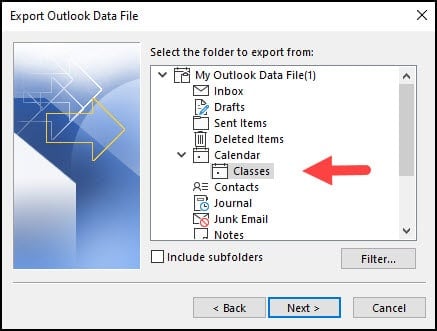
- Click Next >.
- Note the exported calendar file name and path.
- In the Options section, select Do not export duplicate items.
- Click Finish.
- Enter your Outlook password if prompted.
The above process exported my “Classes” calendar to a new PST file. The “Classes” calendar still exists. The next process is to import this file into my main calendar. As you might expect, the process is similar.
Part 2: Import File into your Main Outlook Calendar
- Select your main calendar under My Calendars. The other calendars should be deselected.
- From the File menu, select Open & Export.
- From the Open panel, select Import/Export.
- In the Import and Export Wizard, select Import from another program or file.
- Click Next > .
- In the Import a File dialog, select Outlook Data File (.pst).
- Click Next >.
- In the File to import: section, make sure the .PST file you just exported shows. If not, browse to the correct file.
- In the Options section, select the radio button that suits your needs. In my case, I chose not to import duplicates because I knew I had some on my main calendar.
- Click Next >.
✪ Outlook will add some calendar entries under My Calendars. We’ll address these later.
- Select the Destination for this file. In my case, I’m importing this file into the current folder, which is the calendar I selected.
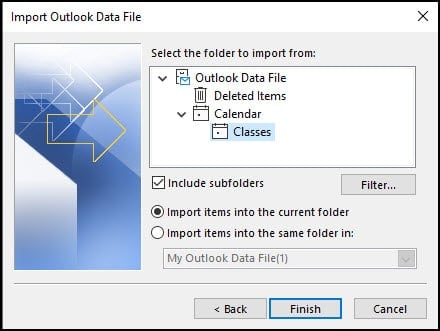
- Confirm the listed action and click Finish. Your extra calendars should disappear.
- Review your main calendar to make sure it shows entries from both calendars.
Part 3: Calendar Cleanup
The last step is to delete your secondary calendar. In my case, this was Classes. If you’re not comfortable with deleting it, you can hide it instead.
- Select the calendar you wish to delete.
- Right-click the calendar and select Delete Calendar from the menu.
As you’ve seen, there are two distinct ways to combine calendar events in Microsoft Outlook. I find that using the overlay option is the best because it’s faster and doesn’t require a file import. It’s not like doing a mail merge with Microsoft Word and having a wizard to guide you through each step.
Disparate Calendars & Multiple Vendors
Sometimes people have complicated scenarios where they are dealing with multiple calendars from different vendors. For example, you might have both Google Calendar and Microsoft 365. For example, one is for work and the other is personal. In these scenarios, I’d suggest testing a calendar syncing service. There are lots of nuances with calendars, so start with a trial plan to check connectivity. While I’ve not tested, one example is CalendarBridge.com.
